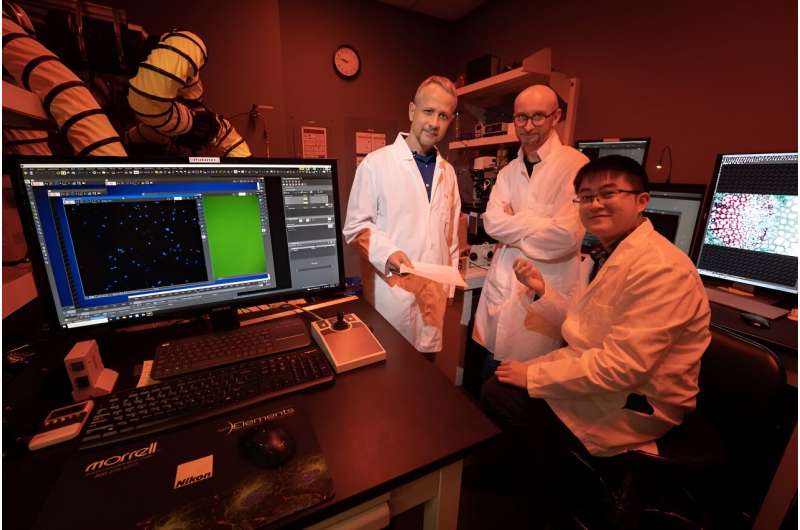This article has been reviewed according to Science X's editorial process and policies. Editors have highlighted the following attributes while ensuring the content's credibility:
fact-checked
peer-reviewed publication
trusted source
proofread
Researchers exploit DNA amplification in cancer to halt chemoresistance

Cancer drug resistance remains a leading reason why treatments for specific cancers eventually do not work. A team of Stony Brook University researchers led by Gábor Balázsi, Ph.D., have been testing drug resistance with mammalian cell lines. Their latest investigation reveals that by taking a part of a DNA amplification from a cell, which causes resistance, and placing it back in, actually stops the drug resistance.
This finding, published this week in PNAS, could lead to additional treatment methods in the attempt to stop chemotherapy drug resistance.
Amplification of DNA in cells is an important chemoresistance mechanism in many types of cancer. In a set of genetically engineered mammalian (hamster) cells, the researchers found that in a majority of cases, the cause of resistance was DNA amplification. This led them to look at ways to target DNA amplification in some way.
The team investigated the engineered mammalian cell lines with synthetic gene circuits integrated into their genome. This process identified DNA amplification as the mechanism of drug resistance against Puromycin, a type of antibiotic agent used in research models, in two-thirds of the cases. They used a piece of DNA called Triplex-Forming Oligonucleotide combined with Puromycin that suppressed the growth of cell populations with DNA amplification.
"Essentially we used a DNA-based therapy against DNA amplification by introducing a piece of the amplified DNA into resistant cells. So, the very resistance mechanism actually led to a treatment that stops it," says Balázsi, Stony Brook's Henry Laufer Professor in the Louis and Beatrice Laufer Center for Physical & Quantitative Biology, Professor of Biomedical Engineering, and a Research Affiliate for the Stony Brook Cancer Center.
"What happens is the extra DNA we introduce as a treatment binds and forms many triplexes—instead of the healthy DNA duplexes—along with the amplified DNA. This process causes many DNA breaks, which kills the resistant cells. By using this 'new drug,' that causes DNA breaks, the more amplification, the more breaks, and the better killing of the resistant cells," he explains.
They furthered the work by testing two human cancer cell lines with the DNA amplification model. The therapy worked in those cell lines as well, killing the chemo-resistant cancer cells.
These findings from using the new nucleotide treatment suppressing the growth of both hamster and cancer cells with DNA amplification, the authors write, suggest new, broadly applicable therapies that might combat chemoresistance in cancer.
The work is an example of how combining the fields of synthetic biology and experimental evolution can lead to new, clinically relevant treatments.
More information: Gábor Balázsi et al, Adaptive DNA amplification of synthetic gene circuit opens a way to overcome cancer chemoresistance, Proceedings of the National Academy of Sciences (2023). DOI: 10.1073/pnas.2303114120. doi.org/10.1073/pnas.2303114120





















